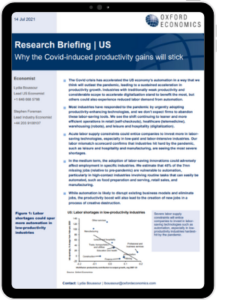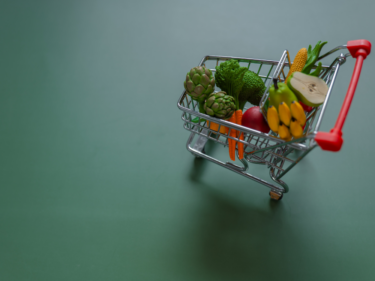US | Why the Covid-induced productivity gains will stick

The Covid crisis has accelerated the US economy’s automation in a way that we think will outlast the pandemic, leading to a sustained acceleration in productivity growth. Industries with traditionally weak productivity and considerable scope to accelerate digitalization stand to benefit the most, but others could also experience reduced labor demand from automation.
What you will learn:
- Most industries have responded to the pandemic by urgently adopting productivity-enhancing technologies, and we don’t expect firms to abandon these labor-saving tools.
- We see the shift continuing to leaner and more efficient operations in retail (self-checkouts), healthcare (telemedicine), warehousing (robots), and leisure and hospitality (digitalization).
- Acute labor supply constraints could entice companies to invest more in labor-saving technologies, especially in low-paid and labor-intensive industries. Our labor mismatch scorecard confirms that industries hit hard by the pandemic, such as leisure and hospitality and manufacturing, are seeing the most severe shortages.
Tags:
Related Services

Post
The euro and depreciation – shake, shake it off
Our new forecast assumes a slower euro appreciation against the dollar over the coming years than we previously anticipated. Relative productivity, terms of trade, and the current account will likely be less supportive of the euro than we thought. In addition, a stronger stock market than initially envisaged will attract more financial flows into the US than we had expected.
Find Out More
Post
Food prices to bottom out in 2024, risks skewed to upside
Our baseline forecast is for world food commodity prices to register an annual decline this year, in aggregate, reducing pressure on food retail prices further downstream. However, we believe the risks to this forecast are overwhelmingly skewed to the upside.
Find Out More